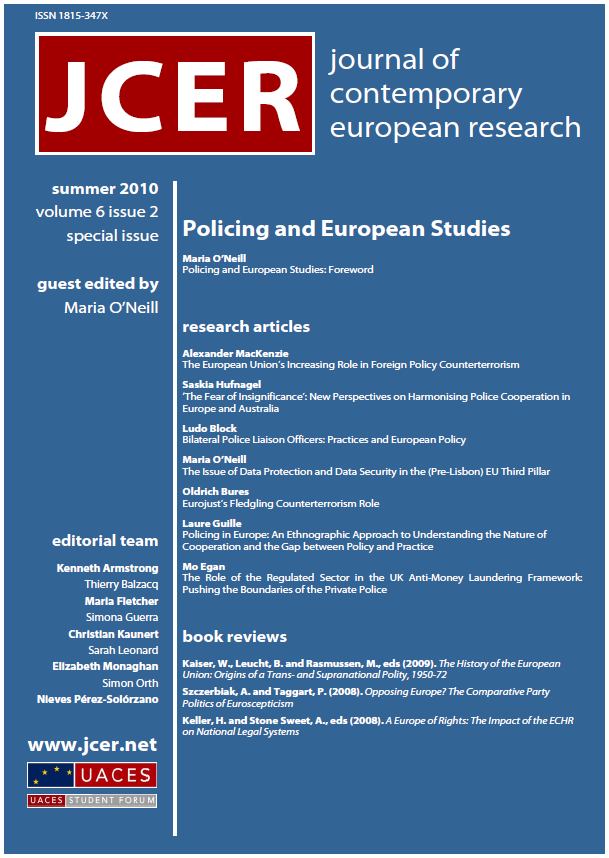The Issue of Data Protection and Data Security in the (Pre-Lisbon) EU Third Pillar
Main
Abstract
The key functional operability in the pre-Lisbon PJCCM pillar of the EU is the exchange of intelligence and information amongst the law enforcement bodies of the EU. The twin issues of data protection and data security within what was the EU’s third pillar legal framework therefore come to the fore. With the Lisbon Treaty reform of the EU, and the increased role of the Commission in PJCCM policy areas, and the integration of the PJCCM provisions with what have traditionally been the pillar I activities of Frontex, the opportunity for streamlining the data protection and data security provisions of the law enforcement bodies of the post-Lisbon EU arises. This is recognised by the Commission in their drafting of an amending regulation for Frontex , when they say that they would prefer “to return to the question of personal data in the context of the overall strategy for information exchange to be presented later this year and also taking into account the reflection to be carried out on how to further develop cooperation between agencies in the justice and home affairs field as requested by the Stockholm programme.” The focus of the literature published on this topic, has for the most part, been on the data protection provisions in Pillar I, EC. While the focus of research has recently sifted to the previously Pillar III PJCCM provisions on data protection, a more focused analysis of the interlocking issues of data protection and data security needs to be made in the context of the law enforcement bodies, particularly with regard to those which were based in the pre-Lisbon third pillar. This paper will make a contribution to that debate, arguing that a review of both the data protection and security provision post-Lisbon is required, not only in order to reinforce individual rights, but also inter-agency operability in combating cross-border EU crime. The EC’s provisions on data protection, as enshrined by Directive 95/46/EC, do not apply to the legal frameworks covering developments within the third pillar of the EU. Even Council Framework Decision 2008/977/JHA, which is supposed to cover data protection provisions within PJCCM expressly states that its provisions do not apply to “Europol, Eurojust, the Schengen Information System (SIS)” or to the Customs Information System (CIS). In addition, the post Treaty of Prüm provisions covering the sharing of DNA profiles, dactyloscopic data and vehicle registration data pursuant to Council Decision 2008/615/JHA, are not to be covered by the provisions of the 2008 Framework Decision. As stated by Hijmans and Scirocco, the regime is “best defined as a patchwork of data protection regimes”, with “no legal framework which is stable and unequivocal, like Directive 95/46/EC in the First pillar”. Data security issues are also key to the sharing of data in organised crime or counterterrorism situations. This article will critically analyse the current legal framework for data protection and security within the third pillar of the EU.
Details
Article Keywords
Data protection, data security, PJCCM, Europol, Eurojust, Schengen, Prum
Section
Research Articles
Article Copyright

This work is licensed under a Creative Commons Attribution-NonCommercial-NoDerivatives 4.0 International License.
Material published in the JCER is done so under a CC BY-NC-ND 4.0 licence, with copyright remaining with the author.- Articles published online in the JCER cannot be published in another journal without explicit approval of the JCER editor.
- Authors can 'self-archive' their articles in digital form on their personal homepages, funder repositories or their institutions' archives provided that they link back to the original source on the JCER website. Authors can archive pre-print, post-print or the publisher's version of their work.
- Authors agree that submitted articles to the JCER will be submitted to various abstracting, indexing and archiving services as selected by the JCER.







